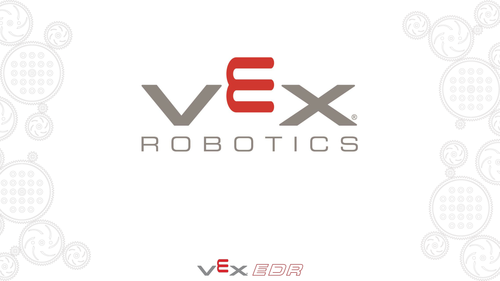










































The project concentrates on the design and manufacture of a TD Tumbler using VEX robotics parts. The build is relatively simple ensuring success for all pupils new to VEX robotics. Once the build is complete, pupils must design and create a unique RobotC program which will give desired control of the robot, using sensors which must also be carefully fitted to the Tumbler frame depending on the application. Through the project pupils will be able to develop a keen and focused level of knowledge of robotics design, but in the context of VEX parts.
* Lesson 01 – Introducing the aim for the unit’s project, pupils will Learn about robots, force and motors. Be able to label features of a DC motor.
* Lesson 02 – Pupils will develop an understanding of simple frame design and the building techniques required to create simple robot design solutions.
* Lesson 03 – Pupils will learn how motion is created in robotics and how different types of motion can be achieved.
* Lesson 04 – Pupils will then move on to understanding how power can be used to achieve functional robotics and how batteries differ and can be used for VEX.
* Lesson 05 – Pupils will Learn how robotics are controlled and how this supports modern manufacture and industry. Working with a control programme, pupils will then learn about how programming works.
* Lesson 06 – Pupils will develop an understanding of how inputs such as sensors help robotics to function, and work with a range of sensors to achieve a desired level of control and functionality.
* Lesson 07 – Then will then go on to Learn how to apply sensors to different scenarios and how sensors can add accurate control. They will then apply sensors to a range of simple challenges.
* Lesson 08 – Reviewing their knowledge, pupils will respond to different design challenges by applying new skills learnt through the build and programming of a quality product.
* Lesson 09 – Pupils will then adapt their designs to meet new challenges, needs and for different users.
* Lesson 10 – This lesson will allow pupils to test and prove your product against set goals to prove functionality. Adapt the design solution to meet the criteria for the product better.
* Lesson 11 – Pupils will get to create a new and unique product solution using a range of sensors, control programming and the application of CAD software.
* Lesson 12 – Pupils will review the learning over a period of time, reflect on your progress, and set new targets for your next project in a different (or similar) material area.
* Lesson 01 – Introducing the aim for the unit’s project, pupils will Learn about robots, force and motors. Be able to label features of a DC motor.
* Lesson 02 – Pupils will develop an understanding of simple frame design and the building techniques required to create simple robot design solutions.
* Lesson 03 – Pupils will learn how motion is created in robotics and how different types of motion can be achieved.
* Lesson 04 – Pupils will then move on to understanding how power can be used to achieve functional robotics and how batteries differ and can be used for VEX.
* Lesson 05 – Pupils will Learn how robotics are controlled and how this supports modern manufacture and industry. Working with a control programme, pupils will then learn about how programming works.
* Lesson 06 – Pupils will develop an understanding of how inputs such as sensors help robotics to function, and work with a range of sensors to achieve a desired level of control and functionality.
* Lesson 07 – Then will then go on to Learn how to apply sensors to different scenarios and how sensors can add accurate control. They will then apply sensors to a range of simple challenges.
* Lesson 08 – Reviewing their knowledge, pupils will respond to different design challenges by applying new skills learnt through the build and programming of a quality product.
* Lesson 09 – Pupils will then adapt their designs to meet new challenges, needs and for different users.
* Lesson 10 – This lesson will allow pupils to test and prove your product against set goals to prove functionality. Adapt the design solution to meet the criteria for the product better.
* Lesson 11 – Pupils will get to create a new and unique product solution using a range of sensors, control programming and the application of CAD software.
* Lesson 12 – Pupils will review the learning over a period of time, reflect on your progress, and set new targets for your next project in a different (or similar) material area.
Something went wrong, please try again later.
Report this resourceto let us know if it violates our terms and conditions.
Our customer service team will review your report and will be in touch.
£0.00
